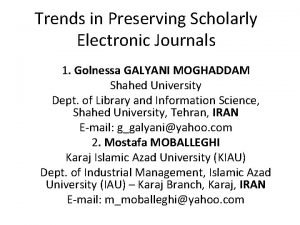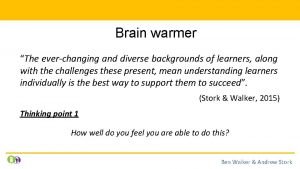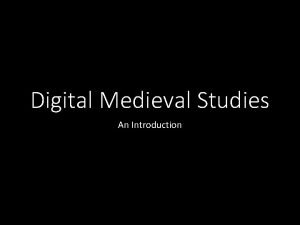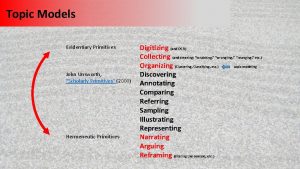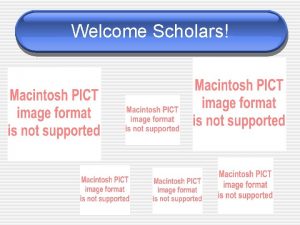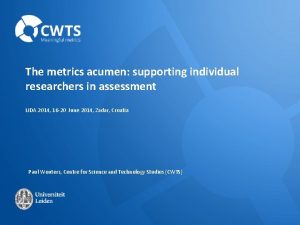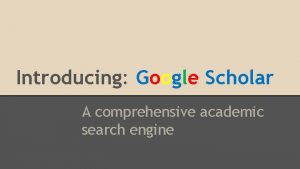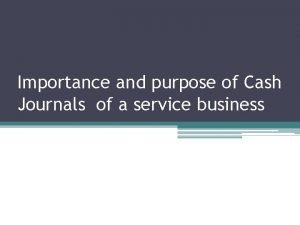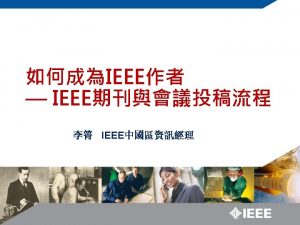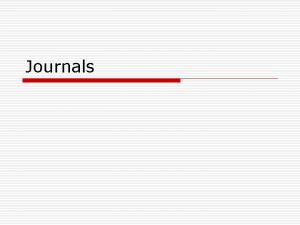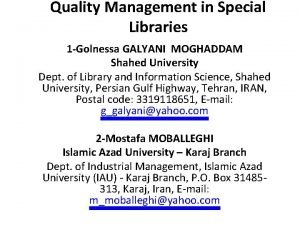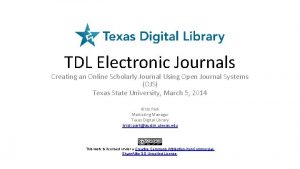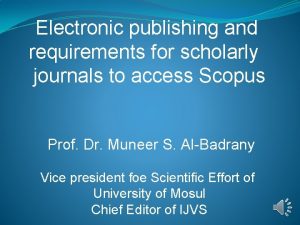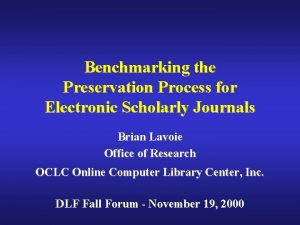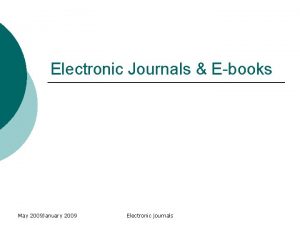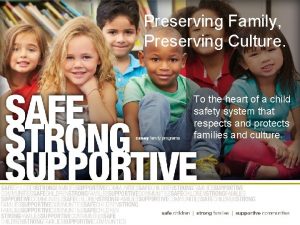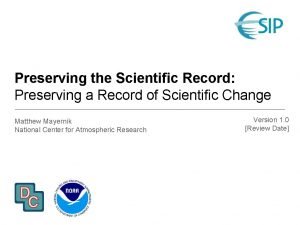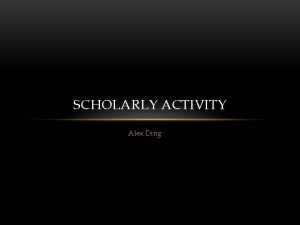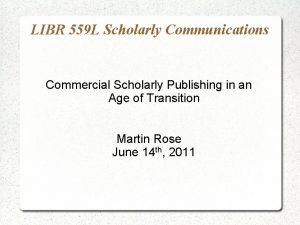Trends in Preserving Scholarly Electronic Journals 1 Golnessa
















- Slides: 16

Trends in Preserving Scholarly Electronic Journals 1. Golnessa GALYANI MOGHADDAM Shahed University Dept. of Library and Information Science, Shahed University, Tehran, IRAN E-mail: g_galyani@yahoo. com 2. Mostafa MOBALLEGHI Karaj Islamic Azad University (KIAU) Dept. of Industrial Management, Islamic Azad University (IAU) – Karaj Branch, Karaj, IRAN E-mail: m_moballeghi@yahoo. com

Definition of Digital Archiving/Preservation Definition by Digital Preservation Coalition: Digital preservation is to define all the activities employed to ensure continued access to digital resources which have retained properties of authenticity, integrity and functionality. It is about what resources are stored, how they are maintained and subsequently accessed and by whom.

Main issues of E-Journals Archiving • • differences between print and digital media, shift in the responsibility of archiving, copyright and intellectual property rights, cost of archiving, expertise, selection, redundancy, organizational issues,

Differences between Print and Digital Media A scholarly journal on the printed page can be viewed and read without any special equipment as long as one knows the language in which it is written. Digital scholarly journals, however, cannot be viewed without special equipment, such as a computer, an Internet connection, and the required software. With the machine dependency, archiving of electronic journals is more complicated than archiving print journals. The life expectancy of digital media is another issue of concern. The short lifecycle of digital media is a threat for digital archiving because digital media become obsolete much faster than print media.

Shift in the Responsibility of Archiving rmation dhas chnology ial changes in the traditional roles of libraries and publishers. One of the major changes is a shift in responsibility of archiving from libraries to publishers in an electronic environment. There is a debate over responsibility of digital archiving among all stakeholders, but at the case of electronic journal it seems that the publishers practically have to accept the responsibility of digital preservation; as in digital environment, electronic publications (particularly electronic journals) are not physically owned by libraries.

Copyright and Intellectual Property Rights Copyright seems to be established well for traditional archiving but not for electronic materials. The copyright and intellectual property rights issues for digital materials are much more complex and significant than for traditional media. Copyrights issues have not got a quick solution in digital preservation, as copyright law allows only fair use and it can prohibit a successful preservation to some extents. Some experts suggest to put away copyright in digital preservation or make some changes in law, though it is not easy to do.

Cost of Archiving Cost of digital preservation seems to be much higher than the cost of traditional preservation. Access to digital resource with the rapid technological changes is not easy and needs expert staff and considerable expenditure on technological needs. Calculation of costs in digital archiving is not easy, however, is a valuable and necessary task to establish a cost-effective and reliable business model.

Expertise Digital preservation needs high skilled staff while in the traditional archiving the scenario was different. It is obvious that the ability to employ and develop staff with appropriate skills is made more difficult by the speed of technological change and the range of skills needed. Continuous training and learning by doing are the methods that can be adopted while both methods have their own limitations.

Selection The huge quantity of information being produced digitally, its variable quality, and the resource constraints on those taking responsibility to preserve long-term access make selectivity inevitable for archiving. Although not all resources can or need to be preserved forever, some will not need to be preserved at all, others will need to be preserved only for a defined period of time, and a relatively small sub-set will need to be preserved indefinitely. The decision should be made as early as possible to help save resources for the most valuable digital assets.

Redundancy Theoretically, in a digital environment, a single institution can provide worldwide access and accept preservation responsibility, although there is a debate whether a level of redundancy should exist in the digital environment. In order to avoid the danger of losing access over time, at least one copy of materials should be stored in two different repositories. Librarians should make clear who will undertake preservation responsibility and for what period of time.

Organizational Issues There are many organizational issues regarding digital preservation. Digital preservation requires new workflows, new skills and close co-operation across different professions ranging from traditional preservation management skills to computing science. Organizations need to understand digital preservation needs, expertise, technological infrastructures, costs and prepare proper strategies to ensure a successful digital preservations.

some threats for long-term availability of electronic journals • • Data mismanagement, technological dependency, media degradation, and technological obsolescence

Discussion and Conclusion The preserving of scholarly electronic journals is a complex issue with various aspects and is largely different from archiving of print-based scholarly journals. With a broad view, preserving of scholarly journals has social, economics, legal, organizational and technical dimensions. Digital preservation seems to be a complex process and there are many unsolved organizational, managerial and technical issues that make digital preservation a challenging task for all stakeholders.

Discussion and Conclusion (cont…) • Technical issues and challenges related to digital preservation include a lack of practical implementations of preservation standards and a lack of technical knowledge, in general, of what information is required to support the digital preservation process within organizations. • The challenges associated with digital preservation are not purely technical. In order for digital archives to be sustainable over time, the organizations responsible for the archives must have appropriate expertise, resources, and political/institutional mandate to carry out the work required.

The last Point workflows, new skills and close co- operation across different professions ranging from traditional preservation management skills to computing science. There is a need toward more awareness of digital preservation among all stakeholders. This field still is in its infancy.

Thank you
 Golnessa
Golnessa Madeleine leininger scholarly articles
Madeleine leininger scholarly articles Scholarly tutoring
Scholarly tutoring Scholarly
Scholarly Csun scholarly articles
Csun scholarly articles Pmp communication model
Pmp communication model Scholarly primitives
Scholarly primitives Habits of a scholar kaplan
Habits of a scholar kaplan Scholarly publishing and academic resources coalition
Scholarly publishing and academic resources coalition Scholarly acumen
Scholarly acumen Google scholar api
Google scholar api Scholarly articles
Scholarly articles Arab journals platform
Arab journals platform Elsevier vs ieee
Elsevier vs ieee How to publish in ssci journals
How to publish in ssci journals What is the purpose of cash journal
What is the purpose of cash journal Leddy library journals
Leddy library journals
